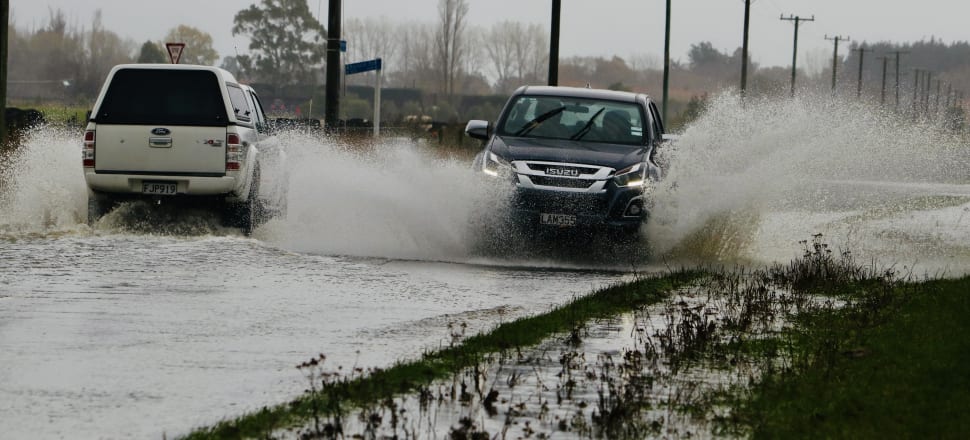
Five 'headwinds' will sharply affect residential and business premiums this year – just as the country's climate adaptation plan highlights the danger of pricing insurance cover out of reach of vulnerable communities
Analysis: Back when some of the thrones in world business and government were still occupied by the 21st Century’s answer to King Canute, denying the rising tides of climate change, the insurance industry played an important role in opening their eyes to the realities of global warming.
Those kings and queens of the stone age may disregard the advice of scientists and environmentalists, but they found it harder to ignore the cold, hard numbers presented by the risk assessors and actuaries.
And this morning, the much-anticipated publication of NZ’s National Adaptation Plan relied significantly on the continued availability of insurance against extreme weather events such as bush fires and storms.
The plan includes a bigger role for private and even government-backed insurance. And the insurance industry is speaking out with greater openness and clarity than ever before about the shape of NZ’s policy response.
Insurers are no more exposed than the rest of us to the impacts of extreme weather events, but they are arguably exposed sooner. When the waters run high through the low-lying homes and business of Westport or the student flats of Dunedin – as happened yet again last week – then the buck stops with insurers and reinsurers. At least, until we manage that risk by retreating from vulnerable areas.
So it’s somewhat alarming that as Climate Change Minister James Shaw highlights the need for increased insurance, the insurance industry is warning that rising premiums will fast price their product beyond the reach of many. I understand that today’s plan will place a stronger focus on support for those most disproportionately affected, such as low-income families and Māori.
We talk of storms. And Insurance Council chief executive Tim Grafton tells me this week of five “headwinds” that will sharply affect residential and business premiums this year. “We’re introducing a whole lot of measures to provide customer support for those who are having liquidity problems and affordability issues.”
1 / A big factor for homeowners will be a higher Earthquake Commission cap, doubling to $300,000 of quake, eruption, tsunami and landslide cover for property owners, even in lower risk areas such as Auckland. The maximum EQC levy is $345, but this will rise to $552 in October – and homeowners will then still need to pay for private insurance for other losses such as fires.
Insurer Tower says it is writing to all its home insurance customers to explain the change. People should only pay for their own risks, chief executive Blair Turnbull tells Stuff.
2 / Premiums will also be affected by high inflation, which at 7.7% is especially pronounced for building and construction work and supplies. “The biggest driver of pricing is inflation, which is currently at record levels, and this flows through to claims costs,” Turnbull says.
3 / That’s exacerbated by supply chain problems, making it slower and more expensive to remediate and rebuild. NZ doesn’t have enough warehouse space to stockpile the supplies it needs, right now.
4 / Local insurers are pricing in their big losses of the past few years. Last year, natural disasters cost them a record $324m in payouts, and this year they’re on track to match that. Grafton says the March and June floods mean losses have already hit $200m for the first half of 2022 – even before the three big floods of July. “Insured losses area hitting new record after a new record.”
5 / The big global reinsurance firms such Lloyd's and Swiss Re – which essentially insure the insurers – are hiking their prices too in response to expensive natural disasters such as floods and fires in Australia, and the storms in NZ.
London-based reinsurer Lloyd's has already warned that NZ is most at risk of a natural disaster globally after flood-prone Bangladesh.
This year, it predicts a “green cold war” in which like-minded states coalesce around major powers to form climate blocs, with competition between blocs for energy, technology, and market dominance. The competition drives investment and innovation, but considerably raises the long-term environmental and geopolitical stakes.
There is an opportunity for the insurance sector to take the initiative, Lloyd's says. The COP26 climate summit revealed a shift in agency over climate change, from the traditional activists, governments and NGOs, to the emerging activists – businesses and private individuals. That’s an argument I’ve been making here at Newsroom Pro for the past couple of years.
The question is the extent to which insurance simply transfers risk, and the extent to which it helps us manage risk.
Grafton is warning the Government against setting up a new flood insurance scheme like the one already offered for earthquakes. He says providing affordable publicly backed insurance won’t reduce the risk from coastal inundation, it will just transfer that risk from homeowners and developers to the insurer.
He’s right – but the Govt must walk a line between driving people away from NZ’s coastline forcefully, and gently easing the impact on the most vulnerable communities using tools such as insurance.
The adaptation plans argue insurers can encourage resilience-building actions through their advice to customers, by providing loans or build-back-better post-event payments, and by sending market signals via their lending and insurance policies. “Loss of insurance or higher premiums are likely to provide incentives for asset owners to manage their risk in other ways, including potentially by taking measures to adapt to the risks such as seeking the development of public flood defences or moving assets,” they say.
As we saw last week in Dunedin, or with the managed retreat of businesses and residences from flood-ravaged Westport, it’s not always the wealthy with their coastal mansions who are affected.







